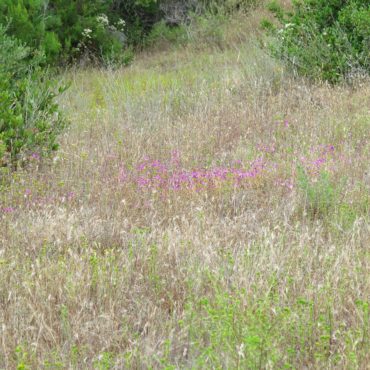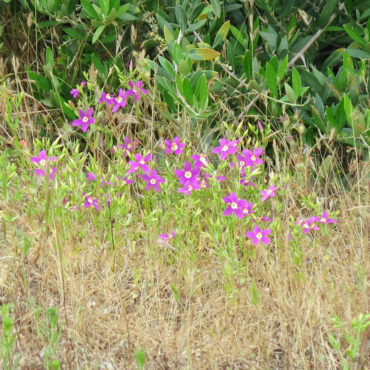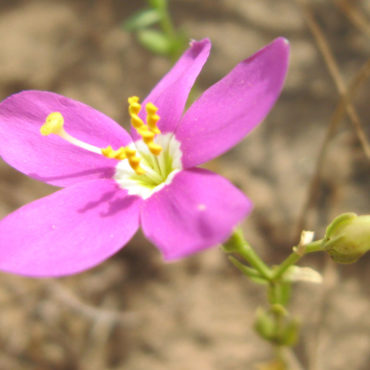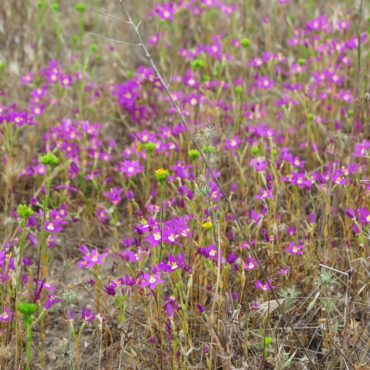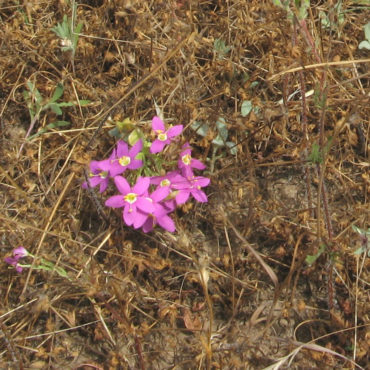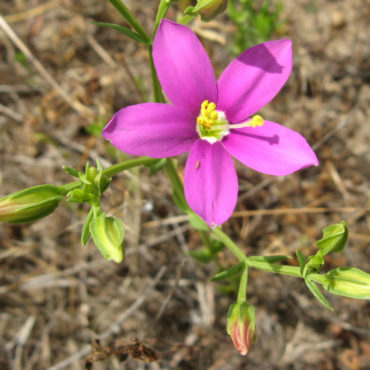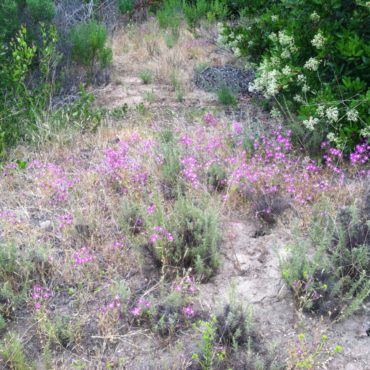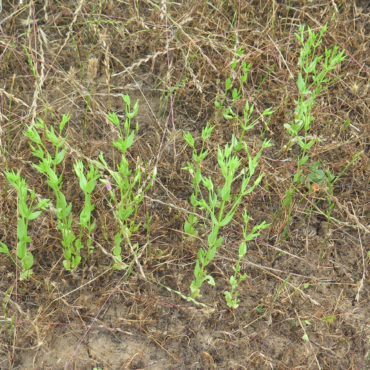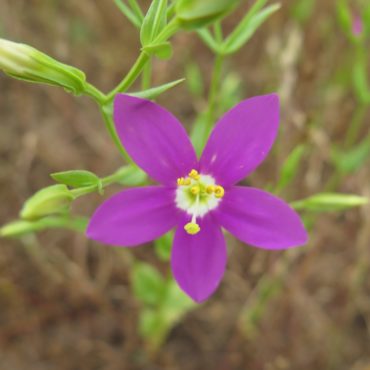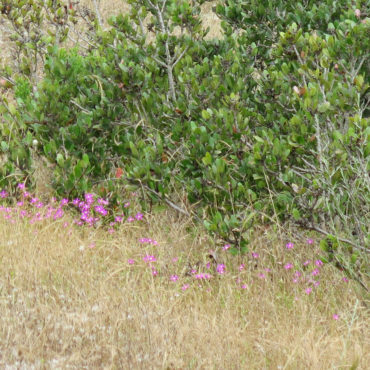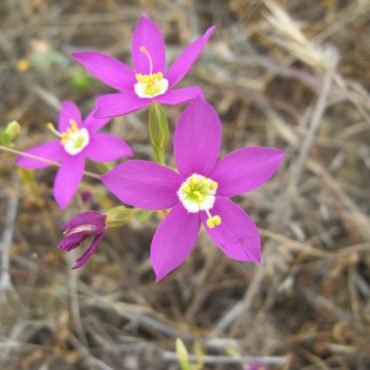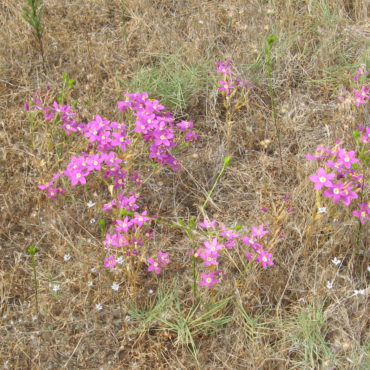Canchalgua, Zeltnera venusta, is a small annual plant, usually less than 12 inches (30 cm) high, from a ridged stem that is single at the base and branches above. Leaves are bright green, oblong to lanceolate, up to an inch and a half (3.8 cm) long and attached directly to stem in opposite pairs. Leaf margins are smooth.
Radially symmetrical, bisexual flowers occur in loosely branched clusters. The green calyx is five (sometimes four) lobed, ridged and forming a narrow fusiform tube that conforms to the shape of the ovary. The corolla is trumpet-shaped with broad, flat, bright magenta lobes. White at the upper throat of each flower and bases of flower lobes form an “eye”. Some authors describe white petals8,59 or red spots on the white throat.23 There are five (occasionally four) stamens, extending above the flower. Anthers are bright yellow, with yellow pollen. After the pollen is shed, the anthers coil into a cork-screw shape. The single pistil has a superior ovary with a slim, two-branched style and two fan-shaped stigmas that are initially appressed to each other, separating on maturity to expose the inner and presumably receptive surfaces. Bloom times reported in the literature range from April – August or later;7,468 in the Reserve the peak flower is May and June.
The fruit is a narrowly-fusiform capsule that develops within the sheath of the persistent calyx. It opens along its length into two valves and releases many tiny, dark, reticulated seeds.



